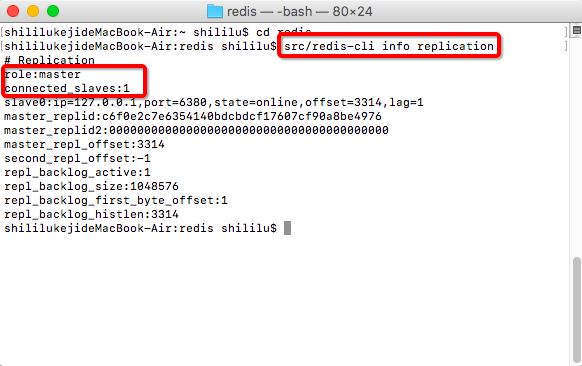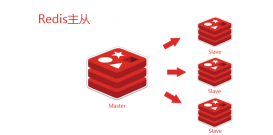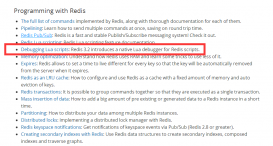前言
Redis作为缓存使用时,一些场景下要考虑内存的空间消耗问题。Redis会删除过期键以释放空间,过期键的删除策略有两种:
- 惰性删除:每次从键空间中获取键时,都检查取得的键是否过期,如果过期的话,就删除该键;如果没有过期,就返回该键。
- 定期删除:每隔一段时间,程序就对数据库进行一次检查,删除里面的过期键。
另外,Redis也可以开启LRU功能来自动淘汰一些键值对。
LRU算法
当需要从缓存中淘汰数据时,我们希望能淘汰那些将来不可能再被使用的数据,保留那些将来还会频繁访问的数据,但最大的问题是缓存并不能预言未来。一个解决方法就是通过LRU进行预测:最近被频繁访问的数据将来被访问的可能性也越大。缓存中的数据一般会有这样的访问分布:一部分数据拥有绝大部分的访问量。当访问模式很少改变时,可以记录每个数据的最后一次访问时间,拥有最少空闲时间的数据可以被认为将来最有可能被访问到。
举例如下的访问模式,A每5s访问一次,B每2s访问一次,C与D每10s访问一次,|代表计算空闲时间的截止点:
~~~~~A~~~~~A~~~~~A~~~~A~~~~~A~~~~~A~~|
~~B~~B~~B~~B~~B~~B~~B~~B~~B~~B~~B~~B~|
~~~~~~~~~~C~~~~~~~~~C~~~~~~~~~C~~~~~~|
~~~~~D~~~~~~~~~~D~~~~~~~~~D~~~~~~~~~D|
可以看到,LRU对于A、B、C工作的很好,完美预测了将来被访问到的概率B>A>C,但对于D却预测了最少的空闲时间。
但是,总体来说,LRU算法已经是一个性能足够好的算法了
LRU配置参数
Redis配置中和LRU有关的有三个:
- maxmemory: 配置Redis存储数据时指定限制的内存大小,比如100m。当缓存消耗的内存超过这个数值时, 将触发数据淘汰。该数据配置为0时,表示缓存的数据量没有限制, 即LRU功能不生效。64位的系统默认值为0,32位的系统默认内存限制为3GB
- maxmemory_policy: 触发数据淘汰后的淘汰策略
- maxmemory_samples: 随机采样的精度,也就是随即取出key的数目。该数值配置越大, 越接近于真实的LRU算法,但是数值越大,相应消耗也变高,对性能有一定影响,样本值默认为5。
淘汰策略
淘汰策略即maxmemory_policy的赋值有以下几种:
- noeviction:如果缓存数据超过了maxmemory限定值,并且客户端正在执行的命令(大部分的写入指令,但DEL和几个指令例外)会导致内存分配,则向客户端返回错误响应
- allkeys-lru: 对所有的键都采取LRU淘汰
- volatile-lru: 仅对设置了过期时间的键采取LRU淘汰
- allkeys-random: 随机回收所有的键
- volatile-random: 随机回收设置过期时间的键
- volatile-ttl: 仅淘汰设置了过期时间的键---淘汰生存时间TTL(Time To Live)更小的键
volatile-lru, volatile-random和volatile-ttl这三个淘汰策略使用的不是全量数据,有可能无法淘汰出足够的内存空间。在没有过期键或者没有设置超时属性的键的情况下,这三种策略和noeviction差不多。
一般的经验规则:
- 使用allkeys-lru策略:当预期请求符合一个幂次分布(二八法则等),比如一部分的子集元素比其它其它元素被访问的更多时,可以选择这个策略。
- 使用allkeys-random:循环连续的访问所有的键时,或者预期请求分布平均(所有元素被访问的概率都差不多)
- 使用volatile-ttl:要采取这个策略,缓存对象的TTL值最好有差异
volatile-lru 和 volatile-random策略,当你想要使用单一的Redis实例来同时实现缓存淘汰和持久化一些经常使用的键集合时很有用。未设置过期时间的键进行持久化保存,设置了过期时间的键参与缓存淘汰。不过一般运行两个实例是解决这个问题的更好方法。
为键设置过期时间也是需要消耗内存的,所以使用allkeys-lru这种策略更加节省空间,因为这种策略下可以不为键设置过期时间。
近似LRU算法
我们知道,LRU算法需要一个双向链表来记录数据的最近被访问顺序,但是出于节省内存的考虑,Redis的LRU算法并非完整的实现。Redis并不会选择最久未被访问的键进行回收,相反它会尝试运行一个近似LRU的算法,通过对少量键进行取样,然后回收其中的最久未被访问的键。通过调整每次回收时的采样数量maxmemory-samples,可以实现调整算法的精度。
根据Redis作者的说法,每个Redis Object可以挤出24 bits的空间,但24 bits是不够存储两个指针的,而存储一个低位时间戳是足够的,Redis Object以秒为单位存储了对象新建或者更新时的unix time,也就是LRU clock,24 bits数据要溢出的话需要194天,而缓存的数据更新非常频繁,已经足够了。
Redis的键空间是放在一个哈希表中的,要从所有的键中选出一个最久未被访问的键,需要另外一个数据结构存储这些源信息,这显然不划算。最初,Redis只是随机的选3个key,然后从中淘汰,后来算法改进到了N个key的策略,默认是5个。
Redis3.0之后又改善了算法的性能,会提供一个待淘汰候选key的pool,里面默认有16个key,按照空闲时间排好序。更新时从Redis键空间随机选择N个key,分别计算它们的空闲时间idle,key只会在pool不满或者空闲时间大于pool里最小的时,才会进入pool,然后从pool中选择空闲时间最大的key淘汰掉。
真实LRU算法与近似LRU的算法可以通过下面的图像对比:
浅灰色带是已经被淘汰的对象,灰色带是没有被淘汰的对象,绿色带是新添加的对象。可以看出,maxmemory-samples值为5时Redis 3.0效果比Redis 2.8要好。使用10个采样大小的Redis 3.0的近似LRU算法已经非常接近理论的性能了。
数据访问模式非常接近幂次分布时,也就是大部分的访问集中于部分键时,LRU近似算法会处理得很好。
在模拟实验的过程中,我们发现如果使用幂次分布的访问模式,真实LRU算法和近似LRU算法几乎没有差别。
LRU源码分析
Redis中的键与值都是redisObject对象:
|
1
2
3
4
5
6
7
8
9
|
typedef struct redisObject { unsigned type:4; unsigned encoding:4; unsigned lru:LRU_BITS; /* LRU time (relative to global lru_clock) or * LFU data (least significant 8 bits frequency * and most significant 16 bits access time). */ int refcount; void *ptr;} robj; |
unsigned的低24 bits的lru记录了redisObj的LRU time。
Redis命令访问缓存的数据时,均会调用函数lookupKey:
|
1
2
3
4
5
6
7
8
9
10
11
12
13
14
15
16
17
18
19
20
21
22
23
|
robj *lookupKey(redisDb *db, robj *key, int flags) { dictEntry *de = dictFind(db->dict,key->ptr); if (de) { robj *val = dictGetVal(de); /* Update the access time for the ageing algorithm. * Don't do it if we have a saving child, as this will trigger * a copy on write madness. */ if (server.rdb_child_pid == -1 && server.aof_child_pid == -1 && !(flags & LOOKUP_NOTOUCH)) { if (server.maxmemory_policy & MAXMEMORY_FLAG_LFU) { updateLFU(val); } else { val->lru = LRU_CLOCK(); } } return val; } else { return NULL; }} |
该函数在策略为LRU(非LFU)时会更新对象的lru值, 设置为LRU_CLOCK()值:
|
1
2
3
4
5
6
7
8
9
10
11
12
13
14
15
16
17
18
19
20
|
/* Return the LRU clock, based on the clock resolution. This is a time * in a reduced-bits format that can be used to set and check the * object->lru field of redisObject structures. */unsigned int getLRUClock(void) { return (mstime()/LRU_CLOCK_RESOLUTION) & LRU_CLOCK_MAX;}/* This function is used to obtain the current LRU clock. * If the current resolution is lower than the frequency we refresh the * LRU clock (as it should be in production servers) we return the * precomputed value, otherwise we need to resort to a system call. */unsigned int LRU_CLOCK(void) { unsigned int lruclock; if (1000/server.hz <= LRU_CLOCK_RESOLUTION) { atomicGet(server.lruclock,lruclock); } else { lruclock = getLRUClock(); } return lruclock;} |
LRU_CLOCK()取决于LRU_CLOCK_RESOLUTION(默认值1000),LRU_CLOCK_RESOLUTION代表了LRU算法的精度,即一个LRU的单位是多长。server.hz代表服务器刷新的频率,如果服务器的时间更新精度值比LRU的精度值要小,LRU_CLOCK()直接使用服务器的时间,减小开销。
Redis处理命令的入口是processCommand:
|
1
2
3
4
5
6
7
8
9
10
11
12
13
14
15
16
17
18
19
20
21
22
23
24
25
26
|
int processCommand(client *c) { /* Handle the maxmemory directive. * * Note that we do not want to reclaim memory if we are here re-entering * the event loop since there is a busy Lua script running in timeout * condition, to avoid mixing the propagation of scripts with the * propagation of DELs due to eviction. */ if (server.maxmemory && !server.lua_timedout) { int out_of_memory = freeMemoryIfNeededAndSafe() == C_ERR; /* freeMemoryIfNeeded may flush slave output buffers. This may result * into a slave, that may be the active client, to be freed. */ if (server.current_client == NULL) return C_ERR; /* It was impossible to free enough memory, and the command the client * is trying to execute is denied during OOM conditions or the client * is in MULTI/EXEC context? Error. */ if (out_of_memory && (c->cmd->flags & CMD_DENYOOM || (c->flags & CLIENT_MULTI && c->cmd->proc != execCommand))) { flagTransaction(c); addReply(c, shared.oomerr); return C_OK; } }} |
只列出了释放内存空间的部分,freeMemoryIfNeededAndSafe为释放内存的函数:
|
1
2
3
4
5
6
7
8
9
10
11
12
13
14
15
16
17
18
19
20
21
22
23
24
25
26
27
28
29
30
31
32
33
34
35
36
37
38
39
40
41
42
43
44
45
46
47
48
49
50
51
52
53
54
55
56
57
58
59
60
61
62
63
64
65
66
67
68
69
70
71
72
73
74
75
76
77
78
79
80
81
82
83
84
85
86
87
88
89
90
91
92
93
94
95
96
97
98
99
100
101
102
103
104
105
106
107
108
109
110
111
112
113
114
115
116
117
118
119
120
121
122
123
124
125
126
127
128
129
130
131
132
133
134
135
136
137
138
139
140
141
142
143
144
145
146
147
148
149
150
151
152
153
154
155
156
157
158
159
160
161
162
163
164
165
166
167
168
169
170
171
172
173
174
175
176
177
178
179
180
181
182
183
184
185
186
187
188
189
190
|
int freeMemoryIfNeeded(void) { /* By default replicas should ignore maxmemory * and just be masters exact copies. */ if (server.masterhost && server.repl_slave_ignore_maxmemory) return C_OK; size_t mem_reported, mem_tofree, mem_freed; mstime_t latency, eviction_latency; long long delta; int slaves = listLength(server.slaves); /* When clients are paused the dataset should be static not just from the * POV of clients not being able to write, but also from the POV of * expires and evictions of keys not being performed. */ if (clientsArePaused()) return C_OK; if (getMaxmemoryState(&mem_reported,NULL,&mem_tofree,NULL) == C_OK) return C_OK; mem_freed = 0; if (server.maxmemory_policy == MAXMEMORY_NO_EVICTION) goto cant_free; /* We need to free memory, but policy forbids. */ latencyStartMonitor(latency); while (mem_freed < mem_tofree) { int j, k, i, keys_freed = 0; static unsigned int next_db = 0; sds bestkey = NULL; int bestdbid; redisDb *db; dict *dict; dictEntry *de; if (server.maxmemory_policy & (MAXMEMORY_FLAG_LRU|MAXMEMORY_FLAG_LFU) || server.maxmemory_policy == MAXMEMORY_VOLATILE_TTL) { struct evictionPoolEntry *pool = EvictionPoolLRU; while(bestkey == NULL) { unsigned long total_keys = 0, keys; /* We don't want to make local-db choices when expiring keys, * so to start populate the eviction pool sampling keys from * every DB. */ for (i = 0; i < server.dbnum; i++) { db = server.db+i; dict = (server.maxmemory_policy & MAXMEMORY_FLAG_ALLKEYS) ? db->dict : db->expires; if ((keys = dictSize(dict)) != 0) { evictionPoolPopulate(i, dict, db->dict, pool); total_keys += keys; } } if (!total_keys) break; /* No keys to evict. */ /* Go backward from best to worst element to evict. */ for (k = EVPOOL_SIZE-1; k >= 0; k--) { if (pool[k].key == NULL) continue; bestdbid = pool[k].dbid; if (server.maxmemory_policy & MAXMEMORY_FLAG_ALLKEYS) { de = dictFind(server.db[pool[k].dbid].dict, pool[k].key); } else { de = dictFind(server.db[pool[k].dbid].expires, pool[k].key); } /* Remove the entry from the pool. */ if (pool[k].key != pool[k].cached) sdsfree(pool[k].key); pool[k].key = NULL; pool[k].idle = 0; /* If the key exists, is our pick. Otherwise it is * a ghost and we need to try the next element. */ if (de) { bestkey = dictGetKey(de); break; } else { /* Ghost... Iterate again. */ } } } } /* volatile-random and allkeys-random policy */ else if (server.maxmemory_policy == MAXMEMORY_ALLKEYS_RANDOM || server.maxmemory_policy == MAXMEMORY_VOLATILE_RANDOM) { /* When evicting a random key, we try to evict a key for * each DB, so we use the static 'next_db' variable to * incrementally visit all DBs. */ for (i = 0; i < server.dbnum; i++) { j = (++next_db) % server.dbnum; db = server.db+j; dict = (server.maxmemory_policy == MAXMEMORY_ALLKEYS_RANDOM) ? db->dict : db->expires; if (dictSize(dict) != 0) { de = dictGetRandomKey(dict); bestkey = dictGetKey(de); bestdbid = j; break; } } } /* Finally remove the selected key. */ if (bestkey) { db = server.db+bestdbid; robj *keyobj = createStringObject(bestkey,sdslen(bestkey)); propagateExpire(db,keyobj,server.lazyfree_lazy_eviction); /* We compute the amount of memory freed by db*Delete() alone. * It is possible that actually the memory needed to propagate * the DEL in AOF and replication link is greater than the one * we are freeing removing the key, but we can't account for * that otherwise we would never exit the loop. * * AOF and Output buffer memory will be freed eventually so * we only care about memory used by the key space. */ delta = (long long) zmalloc_used_memory(); latencyStartMonitor(eviction_latency); if (server.lazyfree_lazy_eviction) dbAsyncDelete(db,keyobj); else dbSyncDelete(db,keyobj); latencyEndMonitor(eviction_latency); latencyAddSampleIfNeeded("eviction-del",eviction_latency); latencyRemoveNestedEvent(latency,eviction_latency); delta -= (long long) zmalloc_used_memory(); mem_freed += delta; server.stat_evictedkeys++; notifyKeyspaceEvent(NOTIFY_EVICTED, "evicted", keyobj, db->id); decrRefCount(keyobj); keys_freed++; /* When the memory to free starts to be big enough, we may * start spending so much time here that is impossible to * deliver data to the slaves fast enough, so we force the * transmission here inside the loop. */ if (slaves) flushSlavesOutputBuffers(); /* Normally our stop condition is the ability to release * a fixed, pre-computed amount of memory. However when we * are deleting objects in another thread, it's better to * check, from time to time, if we already reached our target * memory, since the "mem_freed" amount is computed only * across the dbAsyncDelete() call, while the thread can * release the memory all the time. */ if (server.lazyfree_lazy_eviction && !(keys_freed % 16)) { if (getMaxmemoryState(NULL,NULL,NULL,NULL) == C_OK) { /* Let's satisfy our stop condition. */ mem_freed = mem_tofree; } } } if (!keys_freed) { latencyEndMonitor(latency); latencyAddSampleIfNeeded("eviction-cycle",latency); goto cant_free; /* nothing to free... */ } } latencyEndMonitor(latency); latencyAddSampleIfNeeded("eviction-cycle",latency); return C_OK;cant_free: /* We are here if we are not able to reclaim memory. There is only one * last thing we can try: check if the lazyfree thread has jobs in queue * and wait... */ while(bioPendingJobsOfType(BIO_LAZY_FREE)) { if (((mem_reported - zmalloc_used_memory()) + mem_freed) >= mem_tofree) break; usleep(1000); } return C_ERR;}/* This is a wrapper for freeMemoryIfNeeded() that only really calls the * function if right now there are the conditions to do so safely: * * - There must be no script in timeout condition. * - Nor we are loading data right now. * */int freeMemoryIfNeededAndSafe(void) { if (server.lua_timedout || server.loading) return C_OK; return freeMemoryIfNeeded();} |
几种淘汰策略maxmemory_policy就是在这个函数里面实现的。
当采用LRU时,可以看到,从0号数据库开始(默认16个),根据不同的策略,选择redisDb的dict(全部键)或者expires(有过期时间的键),用来更新候选键池子pool,pool更新策略是evictionPoolPopulate:
|
1
2
3
4
5
6
7
8
9
10
11
12
13
14
15
16
17
18
19
20
21
22
23
24
25
26
27
28
29
30
31
32
33
34
35
36
37
38
39
40
41
42
43
44
45
46
47
48
49
50
51
52
53
54
55
56
57
58
59
60
61
62
63
64
65
66
67
68
69
70
71
72
73
74
75
76
77
78
79
80
81
82
83
84
85
86
87
88
89
90
91
92
93
94
95
96
|
void evictionPoolPopulate(int dbid, dict *sampledict, dict *keydict, struct evictionPoolEntry *pool) { int j, k, count; dictEntry *samples[server.maxmemory_samples]; count = dictGetSomeKeys(sampledict,samples,server.maxmemory_samples); for (j = 0; j < count; j++) { unsigned long long idle; sds key; robj *o; dictEntry *de; de = samples[j]; key = dictGetKey(de); /* If the dictionary we are sampling from is not the main * dictionary (but the expires one) we need to lookup the key * again in the key dictionary to obtain the value object. */ if (server.maxmemory_policy != MAXMEMORY_VOLATILE_TTL) { if (sampledict != keydict) de = dictFind(keydict, key); o = dictGetVal(de); } /* Calculate the idle time according to the policy. This is called * idle just because the code initially handled LRU, but is in fact * just a score where an higher score means better candidate. */ if (server.maxmemory_policy & MAXMEMORY_FLAG_LRU) { idle = estimateObjectIdleTime(o); } else if (server.maxmemory_policy & MAXMEMORY_FLAG_LFU) { /* When we use an LRU policy, we sort the keys by idle time * so that we expire keys starting from greater idle time. * However when the policy is an LFU one, we have a frequency * estimation, and we want to evict keys with lower frequency * first. So inside the pool we put objects using the inverted * frequency subtracting the actual frequency to the maximum * frequency of 255. */ idle = 255-LFUDecrAndReturn(o); } else if (server.maxmemory_policy == MAXMEMORY_VOLATILE_TTL) { /* In this case the sooner the expire the better. */ idle = ULLONG_MAX - (long)dictGetVal(de); } else { serverPanic("Unknown eviction policy in evictionPoolPopulate()"); } /* Insert the element inside the pool. * First, find the first empty bucket or the first populated * bucket that has an idle time smaller than our idle time. */ k = 0; while (k < EVPOOL_SIZE && pool[k].key && pool[k].idle < idle) k++; if (k == 0 && pool[EVPOOL_SIZE-1].key != NULL) { /* Can't insert if the element is < the worst element we have * and there are no empty buckets. */ continue; } else if (k < EVPOOL_SIZE && pool[k].key == NULL) { /* Inserting into empty position. No setup needed before insert. */ } else { /* Inserting in the middle. Now k points to the first element * greater than the element to insert. */ if (pool[EVPOOL_SIZE-1].key == NULL) { /* Free space on the right? Insert at k shifting * all the elements from k to end to the right. */ /* Save SDS before overwriting. */ sds cached = pool[EVPOOL_SIZE-1].cached; memmove(pool+k+1,pool+k, sizeof(pool[0])*(EVPOOL_SIZE-k-1)); pool[k].cached = cached; } else { /* No free space on right? Insert at k-1 */ k--; /* Shift all elements on the left of k (included) to the * left, so we discard the element with smaller idle time. */ sds cached = pool[0].cached; /* Save SDS before overwriting. */ if (pool[0].key != pool[0].cached) sdsfree(pool[0].key); memmove(pool,pool+1,sizeof(pool[0])*k); pool[k].cached = cached; } } /* Try to reuse the cached SDS string allocated in the pool entry, * because allocating and deallocating this object is costly * (according to the profiler, not my fantasy. Remember: * premature optimizbla bla bla bla. */ int klen = sdslen(key); if (klen > EVPOOL_CACHED_SDS_SIZE) { pool[k].key = sdsdup(key); } else { memcpy(pool[k].cached,key,klen+1); sdssetlen(pool[k].cached,klen); pool[k].key = pool[k].cached; } pool[k].idle = idle; pool[k].dbid = dbid; }} |
Redis随机选择maxmemory_samples数量的key,然后计算这些key的空闲时间idle time,当满足条件时(比pool中的某些键的空闲时间还大)就可以进pool。pool更新之后,就淘汰pool中空闲时间最大的键。
estimateObjectIdleTime用来计算Redis对象的空闲时间:
|
1
2
3
4
5
6
7
8
9
10
11
|
/* Given an object returns the min number of milliseconds the object was never * requested, using an approximated LRU algorithm. */unsigned long long estimateObjectIdleTime(robj *o) { unsigned long long lruclock = LRU_CLOCK(); if (lruclock >= o->lru) { return (lruclock - o->lru) * LRU_CLOCK_RESOLUTION; } else { return (lruclock + (LRU_CLOCK_MAX - o->lru)) * LRU_CLOCK_RESOLUTION; }} |
空闲时间基本就是就是对象的lru和全局的LRU_CLOCK()的差值乘以精度LRU_CLOCK_RESOLUTION,将秒转化为了毫秒。
参考链接
总结
以上就是这篇文章的全部内容了,希望本文的内容对大家的学习或者工作具有一定的参考学习价值,谢谢大家对服务器之家的支持。
原文链接:https://www.cnblogs.com/linxiyue/p/10945216.html

















